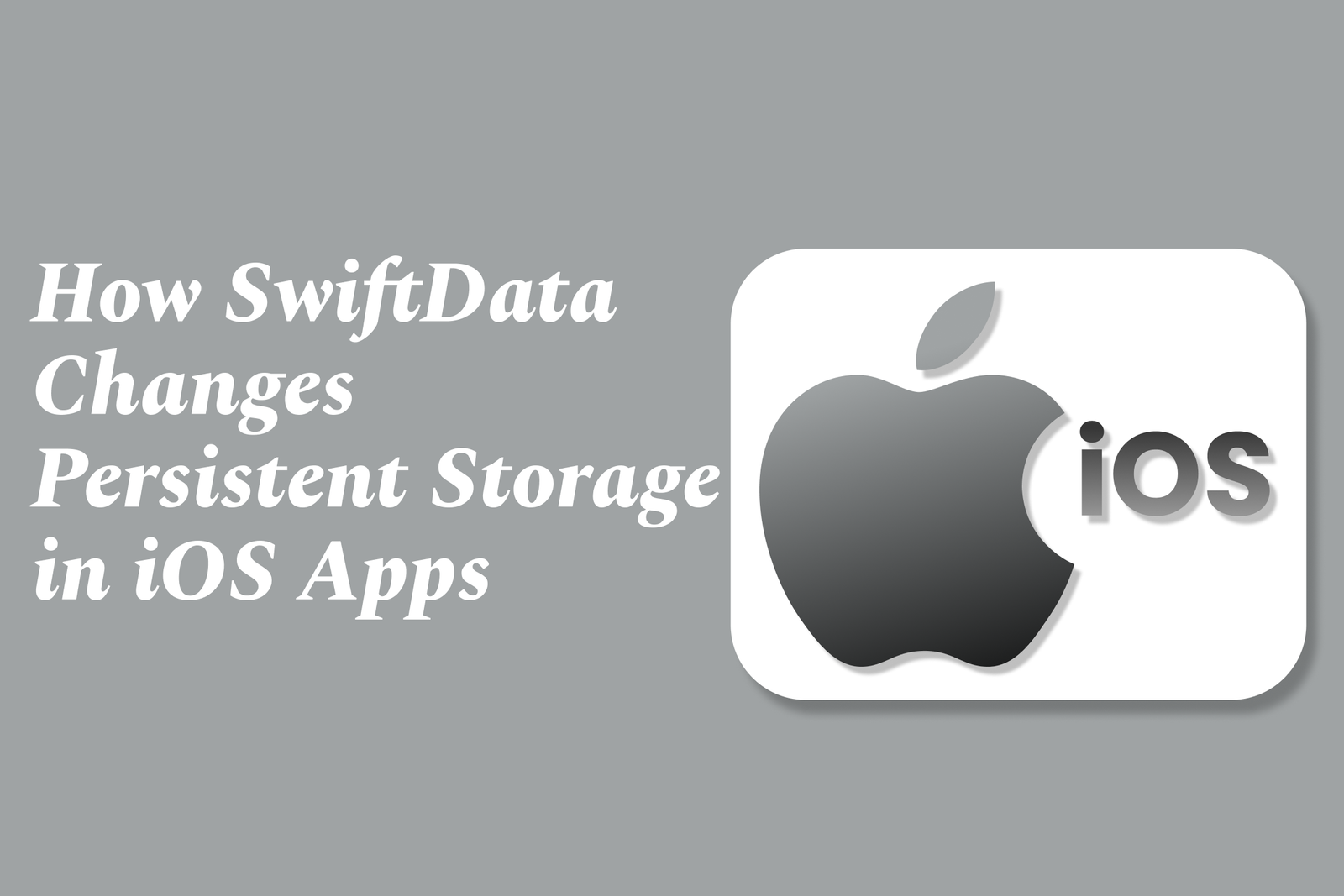How SwiftData Changes Persistent Storage in iOS Apps
SwiftData modernizes persistent storage in iOS apps by offering a simpler, Swift-native framework that integrates seamlessly with SwiftUI, reducing boilerplate code and improving data management with declarative syntax, streamlined relationships, and built-in support for cloud syncing.
How SwiftData Changes Persistent Storage in iOS Apps
1 ) Introduction to SwiftData
SwiftData, released in 2023, is Apple's new data persistence framework designed to simplify and modernize managing persistent storage in SwiftUI apps. It provides a more intuitive, Swift native alternative to Core Data with seamless integration into SwiftUI.
2 ) Core Components of SwiftData
SwiftData consists of three main components:
Model Definition: Defines data schemas or entities, similar to a database schema.
Model Container: Manages the connection to the persistent data store (SQLite database) and links with the model context.
Model Context: The working area for CRUD operations where data objects are fetched, created, updated, and deleted; changes are saved back to the persistent store.
3 ) Benefits Over Core Data
SwiftData offers a streamlined and declarative syntax, reducing complexity and boilerplate compared to Core Data. It enhances developer productivity by closely aligning with Swift and SwiftUI's paradigms and supports improved data flow and state management through environment injection.
4 ) Setting Up SwiftData in SwiftUI Projects
Setup involves declaring models using the `@Model` attribute and configuring the model container in the app’s main file, allowing all views to access the persistent store via environment properties like `@Environment(\.modelContext)`. This ensures centralized data management and consistency across views.
5 ) Working with Relationships
SwiftData supports complex relationships such as one to many and many to many directly in model definitions. For example, a snippet object can belong to a folder (one to many) and have multiple tags (many to many), enhancing the ability to model real world data effectively.
6 ) Practical Usage: CRUD Example
A demo “SnippetBox” app illustrates how to perform Create, Read, Update, and Delete operations intuitively with SwiftData. Developers interact with the model context to insert new objects, fetch existing ones using `@Query`, and modify or delete items, all reflecting instantly in the UI.
7 ) Architectural Patterns and Best Practices
SwiftData encourages well structured code architecture by leveraging `@Model` and `@Query`, but developers can choose to abstract data access for flexibility and testing. Business logic placement, validation, and designing for testability are critical considerations for scalable SwiftData apps.
8 ) Testing and Previews
SwiftData supports injecting in memory model containers during Xcode Previews, facilitating safe, non persistent testing environments. This makes it easier to develop and test UI components without affecting actual stored data.
9 ) CloudKit Integration and Future proofing
SwiftData is compatible with CloudKit for syncing data across devices, though implementation details may require careful planning. Apple’s ongoing updates aim to keep the framework aligned with evolving hardware and software features, making SwiftData a forward looking choice.
10 ) Limitations and Considerations
While SwiftData eases many complexities, developers need to be aware of potential “soft abandonment” risks with Apple APIs, documentation gaps, and abstract complexities. Engaging with Apple developer forums and feedback channels is advised to navigate these challenges effectively.
Summary
SwiftData revolutionizes persistent storage in iOS by providing a simple, native SwiftUI friendly framework that combines the robustness of Core Data with modern programming patterns. It streamlines data management, enriches developer experience, and sets a foundation for scalable, testable, and maintainable apps in the Apple ecosystem.
https://justacademy.in/news-detail/android-quick-settings-customization
https://justacademy.in/news-detail/ios-19:-features-every-developer-should-know
https://justacademy.in/news-detail/flutter-integration-with-github-actions
https://justacademy.in/news-detail/android-accessibility-compliance-news
https://justacademy.in/news-detail/google-i/o-2025-highlights:-flutter-takes-the-lead
Related Posts
Java supports GDPR and data privacy by enabling secure data handling through encryption, controlled access, and precise data management. It allows developers to minimize PII exposure, ensure data confidentiality, and design workflows that comply with data protection regulations effectively.
Java code quality tools have evolved to include advanced static analysis, integrated security checks, and AI-powered code reviews. These updates help developers detect bugs, enforce coding standards, and enhance security, streamlining the development process and improving overall code reliability.
Java remains a cornerstone in big tech companies, evolving with modern features like records, pattern matching, and virtual threads. Its robust ecosystem, enhanced performance, and growing AI integrations keep it vital for both legacy systems and innovative new projects.
Java and CI/CD pipeline optimizations streamline Java application development by automating builds, tests, and deployments. They improve efficiency through parallelization, caching, and secure secrets management, enabling faster feedback loops and more reliable, scalable software delivery.
Java supports modern cryptography standards through its flexible Java Cryptography Architecture (JCA), enabling integration of advanced algorithms like AES, EdDSA, and post-quantum tools. Libraries like Bouncy Castle offer FIPS-certified, hardware-accelerated implementations for secure development.
Java 23 enhances record patterns by enabling concise, direct destructuring of record components within pattern matching, simplifying type checks and data extraction. This improvement boosts code readability and expressiveness by reducing boilerplate in handling immutable data classes.
Java remains a top choice for mobile app backends, powering scalable, secure, and high-performance server-side solutions. Latest trends include cloud-native microservices, reactive programming, and enhanced JVM optimizations, enabling efficient, flexible, and robust mobile backend development.
Java SE 24 and LTS Java SE 21 offer enhanced features and performance, while Apache Spark 4.0.0 introduces Scala 2.13 support and advanced ML and SQL capabilities. Together, they empower developers to build scalable, high-performance data applications with modern tools.
JUnit 5 modernizes Java testing with a modular architecture, improved assertions, and seamless Java 8+ support. Beyond JUnit, tools like Mockito and AssertJ enhance mocking and assertions, creating a powerful, flexible ecosystem for writing clean, efficient Java unit tests.
Java plays a pivotal role in cloud automation tools by providing a robust, platform-independent language used to build scalable automation frameworks like Jenkins and Selenium, enabling efficient CI/CD pipelines, testing, and orchestration across diverse cloud environments.










